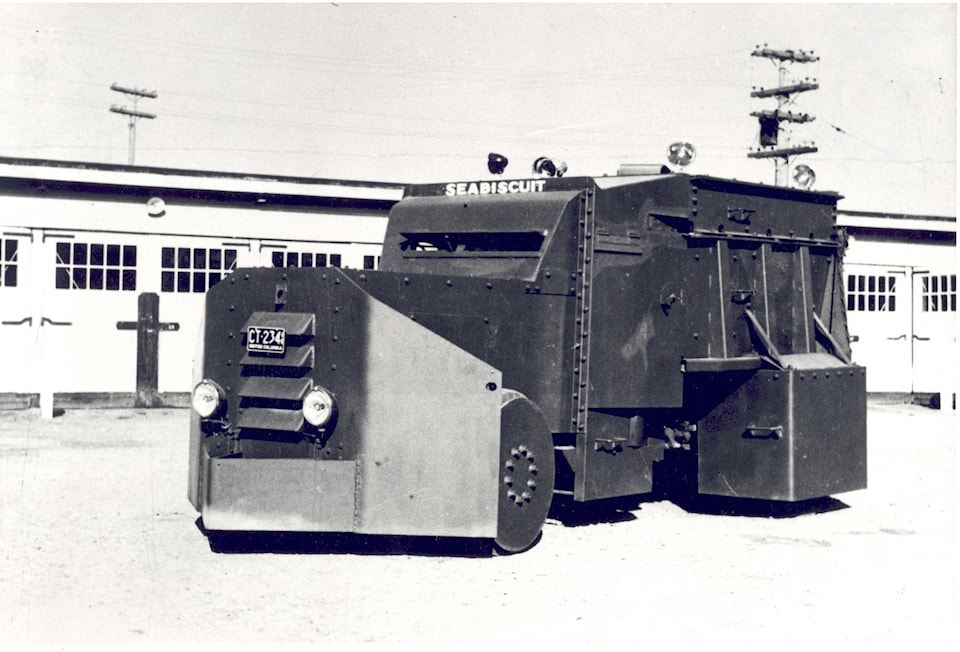With COVID-19 cancelling Remembrance Day services at the Trail Cenotaph this year, Trail Blazers instead is presenting photos from the past as a way to honour Nov. 11, 2020.
In the wartime years, Remembrance Day services were held in front of the Canadian Legion, also known as Memorial Hall, on Victoria Street.

The building was constructed in 1924 as a memorial to the Trail men who lost their lives in the First World War.
Consolidated Mining and Smelting (CM&S, now Teck Trail) donated the land and paid for half the construction costs.
The Trail community joined together to raise the rest of the money needed.
This first Legion building also housed a library, a gymnasium, and a bowling alley.
Later, in 1928, the Jubilee outdoor pool was added.
The Legion conducted Remembrance Day ceremonies in front of this cornerstone hub until the Trail Cenotaph was built in 1951.
The Royal Canadian Legion renovated the interior after the Second World War, where it stood until teardown in 2000.
Another interesting wartime image shared by the city archives for this feature is of “Seabiscuit.”
Seabiscuit was a truck converted into an armoured car by CM&S, for security purposes, during the Second World War.
(This stalwart auto was likely named after Seabiscuit, a champion thoroughbred racehorse in the United States who became the top money winning racehorse up to the 1940s, as noted in films and books. He beat the 1937 Triple-Crown winner, War Admiral, by four lengths in a two-horse special at Pimlico and was voted American Horse of the Year for 1938.)
CM&S contributed to the war efforts of both world wars.
“World War I increased the demand for lead and zinc and the CM&S realized the need to develop a better means to treat zinc ores,” Jesslyn Jarvis, the city’s collection coordinator explained.
Ralph W. Diamond was hired by the company to develop a process to treat the rich lead and zinc ores of the Sullivan Mine, and his research later led to a breakthrough in treating zinc ore with the development of the zinc electrolytic refining process.
“During World War II, production at the smelter was increased to assist with the war effort and heavy water produced at CM&S’ Hydrogen Plant in Warfield was used in the development of the atomic bomb,” Jarvis said.
“Project 9, as it was named, was top secret and employees were not aware the product was meant for nuclear production.”
